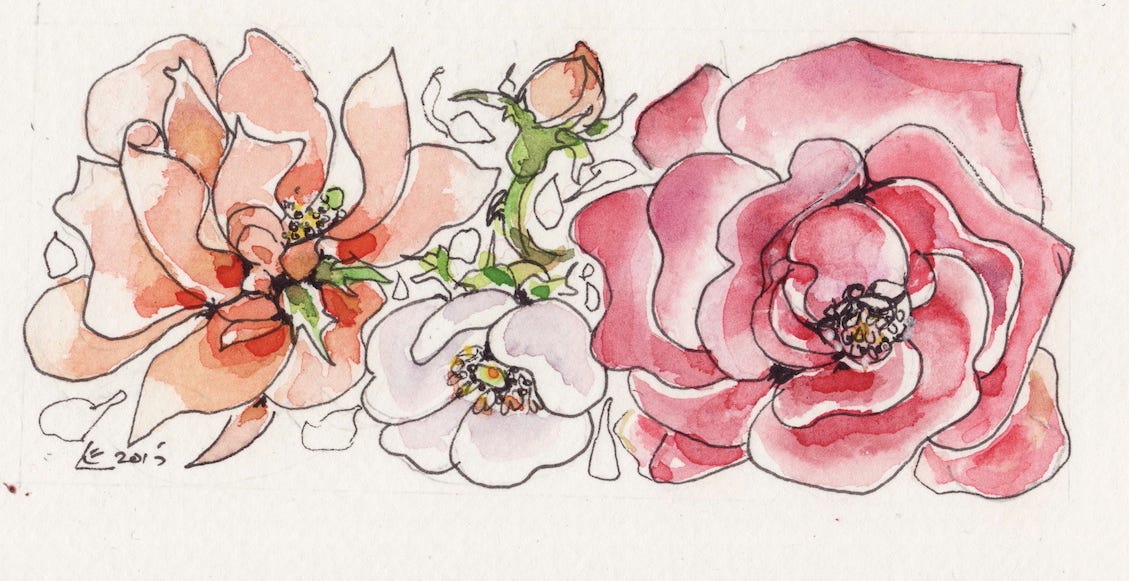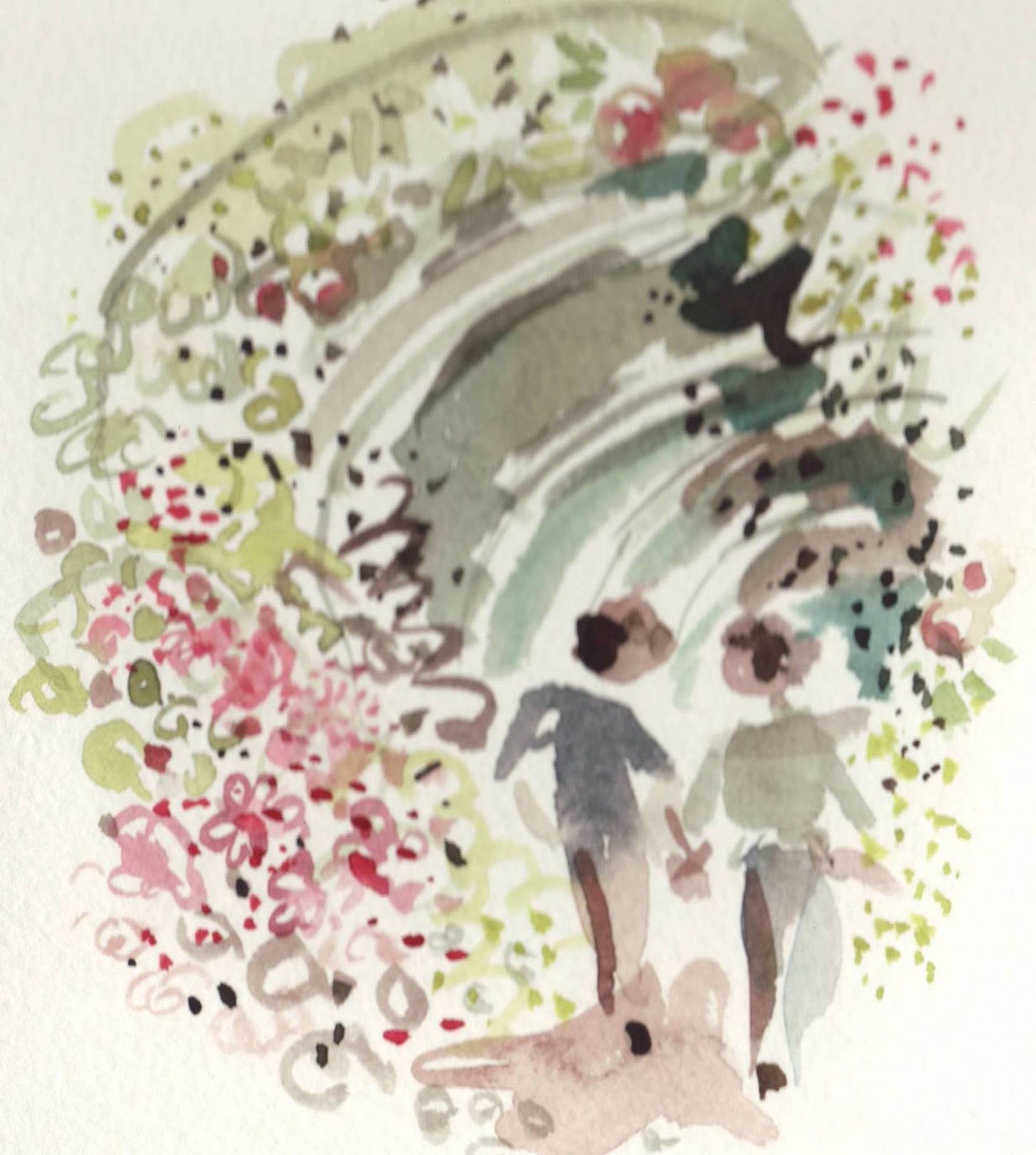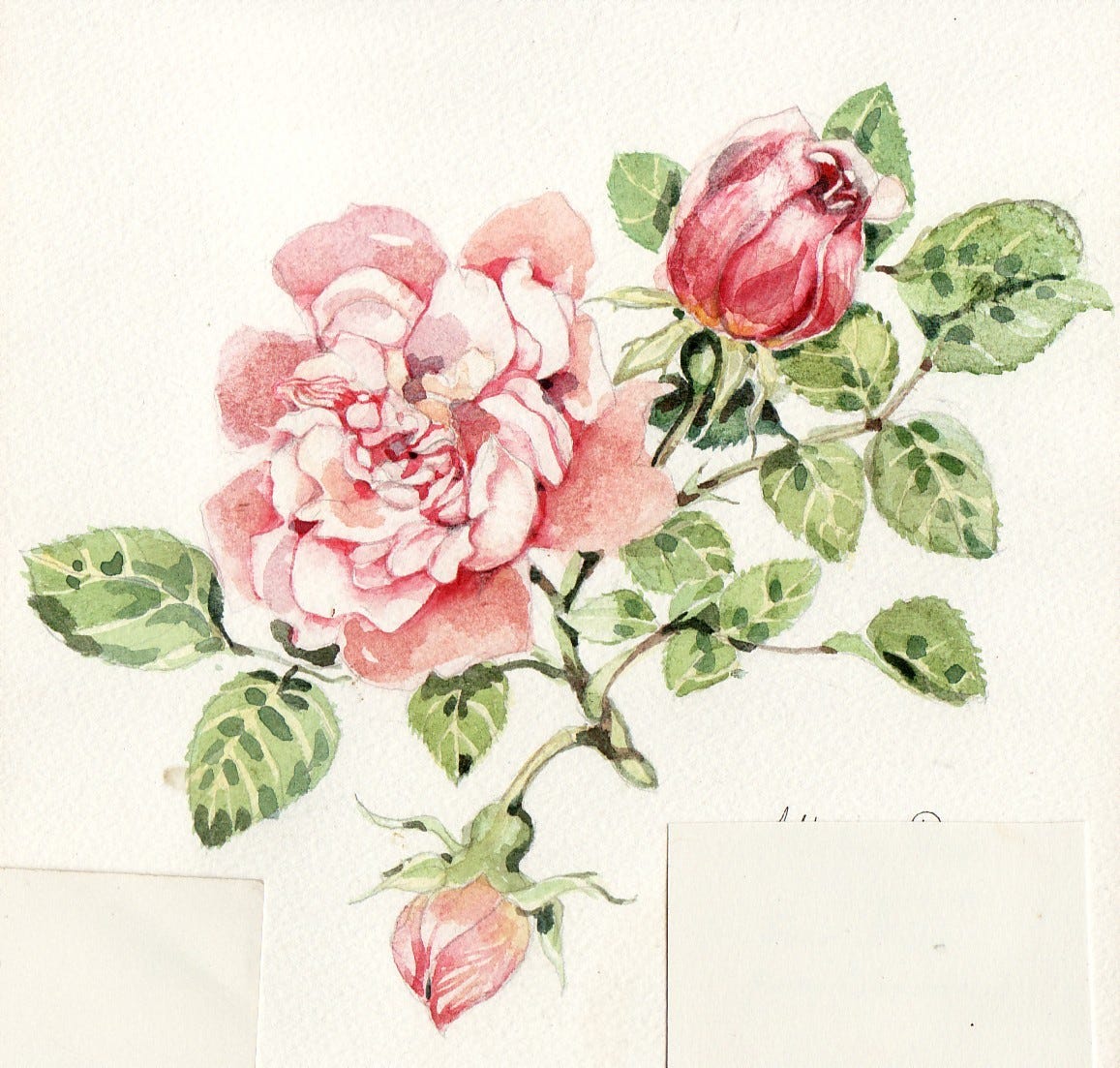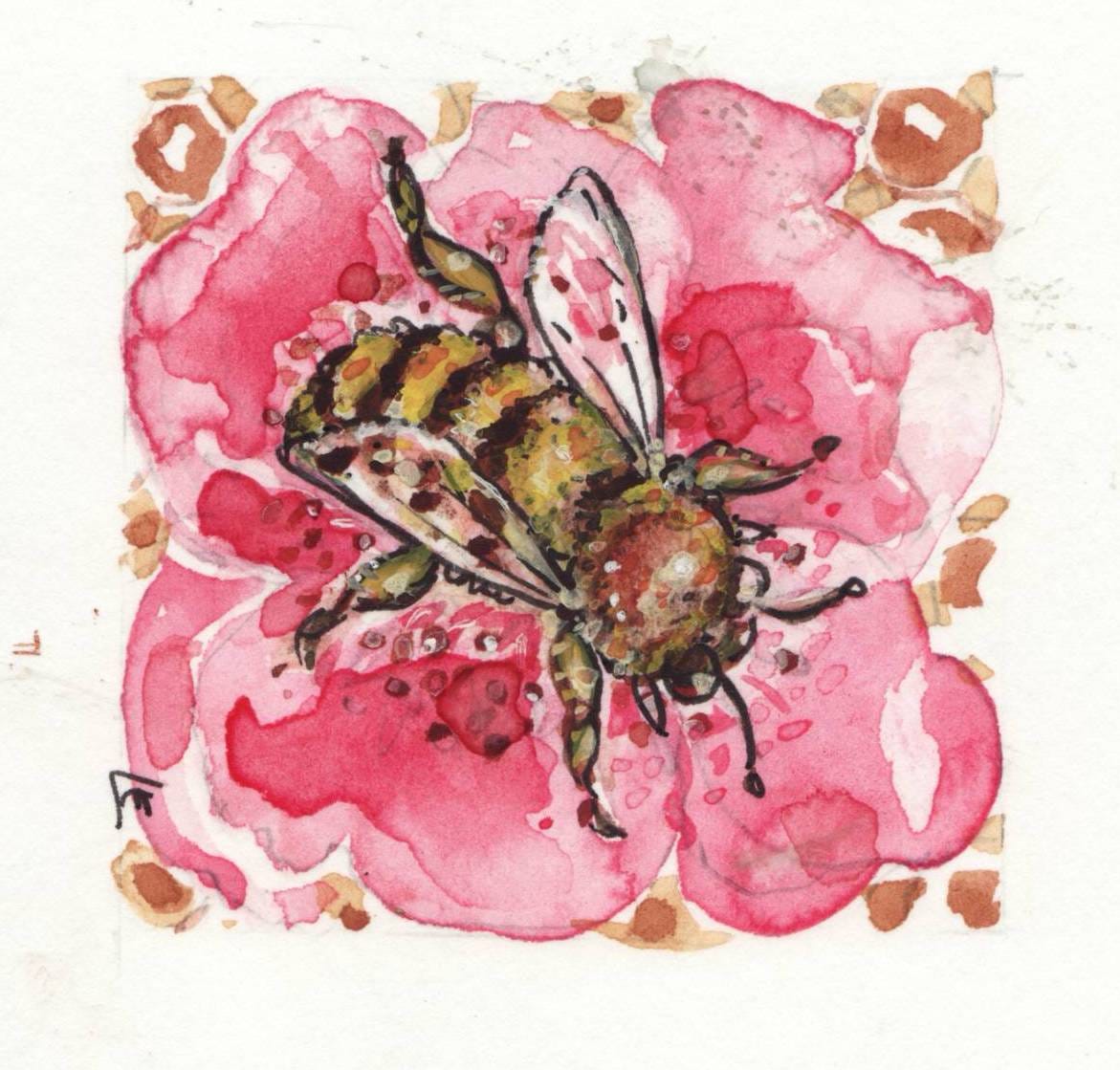Valentine's Day Special!
....the limitations of chocolate and the seductive powers of the rose
Love is in the air. Never mind the news or the weather or what the neighbours may think, everything’s coming up roses. Rosa damascena, the culinary rose, a scented beauty that flourishes in the mountains of Bulgaria on the slopes of the Shipka Pass, was valued as a love-potion by the beauties of the Ottoman Sultan’s harem. . All the more poignant that the rose-fields served as a battleground that separated Imperial Russia from the lands of the Ottomans,
The thorns that protect the petals are needle-sharp and curved like a scimetar, the weapon with which the Ottoman Sultan’s Janissaries subdued his enemies. The women and girls who gathered the blooms that scented the Sultan’s harem wore wooden mittens to protect their hands, so that not a drop of blood was allowed to pollute the perfume’s purity. Replaced by new materials, gloves, carved and hinged like the hands of marionettes, were among discarded items offered for sale to tourists (including me, in 2014) at entrance to one of the subterranean monasteries where Christian monks took refuge under Ottoman rule.
While the Ottoman Empire was replaced by the Turkish secular state in the aftermath of WW1, the seductive power of the rose - attar, perfume, rosewater - endures throughout the lands that came under Ottoman rule, not only worn on the skin but tasted on lips and tongue. No doubt the ladies of the segalio, eager to outdo a thousand rival odalisques competing for imperial favours, the more seductive the fragrance, the more memorable the night’s encounter, the greater the chance of rising from concubine to consort.
Lovers choose roses as a love token with good reason. Roses lack innocence. Violets are suitable for young girls, lavendar is for old ladies, but the rose is a promise of fulfilment. If chocolate is a promise of passing pleasure, roses are a gift from the heart. So much the more sincere if the gift is of loukhum scented with rosewater, or the sweet crisp layers of a nut-filled pastry soaked in rose-scented syrup, or a taste of rose-petal jam offered to welcome a stranger.
Which is all very well for those of us who have such Ottoman delights to hand. Those of us, however, who wish to capture the scent of the English rose-garden in summer in preparation for next year, will find detailed instructions for the preparation of rose-water and rose-petal jelly in The Vicomte in the Kitchen, a culinary manual published in 1933 for English cooks seduced by the idea of la cuisine française by man-about-the-garden George de Mauduit, rose-water and rose-petal jelly.
“To prepare rose water: half-fill a silver basin with red rose perals, fill to 2 inches of the rim with rain water, cover and set in a pan of boiling water. After one hour take out the ptals, s”ringing out all their liquor in the basin and add more fresh petals. Repeat six times, then bottle up….For syrup of roses, proceed as above, but at the end of seventh iteration, pour the hot liquor over a quantity of preserving sugar in a saucepan, stir well, and when the sugar is dissolved without heating, strain and bottle up.”
Rose-petal jelly, says M. de Maudit, is a delicate tea-time preserve served sandwiched between two layers of bread and butter, or simply spread on sliced brown bread on a little whipped cream. “There must be red roses for this preserve They should be picked in the early morning before the sun’s rays have touched them. The best sorts of roses include Etoile de Hollande, Ena Harkness and the red Rugosa of Provence.. Pick in the early morning on a dry day, separate the petals, inspect each one, removing the yellow or white parts at the centrs and any parts marked by rain or insects.
“Rub the petals with the best cane sugar (powdered). For a quantity of about 25 to 30 large roses, make a syrup of 4 tumblers of spring water and 5 tumblers of best cane preserving sugar. Boil till it candies slightly. Then add the strained juice of half a lemon and the petals. Boil again add a piece of butter about the size of a walnut (this will clear away any scum and make the jam bright nd clear), then simmer very gently under a lid for one hour and a quarter. Every ten mins or so, stir with a wooden spoon. Pour in dry warm jars to cool. Cover as usual. This jam is as the roses smell, and is of a clear ruby colour.
“To prepare rose-petal jam, allow a litre of petals to an equal volume of water to the same weight of preserving sugar to the juice of a lemon. For a rose liqueur, strain and stir with an equal volume of brandy. You can make your own rosewater by soaking rose-petals in their own volume of cold water; leave for an hour, strain and repeat with fresh petals as many times as required to make a well-flavoured water. Bottle, store in the fridge and use as required.”
p.s. Beloved paid subscribers (I’m sorry the UK banking system doesn’t currently allow me to attach a paid-for add-on to the end of this post) will shortly be in receipt of a recipe for Rose-petal Pilaf and Rose-water Rice Pudding.
p.p.s. There’s loads of flower and veg prints from my watercolours available at https://elisabethluard.org/shop.














Such a profusion! I can smell the attar all the way in Maine. Must get me a damascene rose (or two or three) for the garden so I can make rose petal jam, which I had once on Crete, deep, dark red and so fragrant, spooned atop a bowl of snow-white yogurt, probably goat's milk (I didn't ask, regrettably). Thanks for the memory, Miz Luard!
Gorgeous!!! And your delicate painting of the roses! I remember being in a small homestay in Goreme in October 1982. Breakfast bread and butter etc came with a pale honey-looking jam. I asked what it was. I spoke no Turkish and my host no English. "Gul" he said. I recognised the word for flower. Of course it was rose petal jam, delicate and beautiful. Your post brought back the memory of that long ago day. ☀️🧡